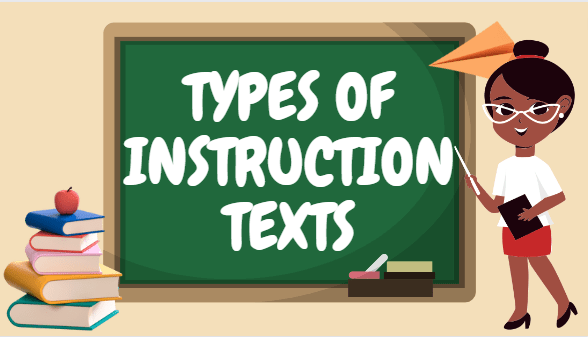Esta proposta de atividade de Língua Inglesa com base no DC/GO – Ampliado é destinada aos estudantes do 6º Ano do Ensino Fundamental Anos Finais.

Leia o texto e responda as questões sobre o mesmo:
Types of Instruction Text
Instructional texts, also known as normative texts, provide readers with step-by-step guidance for performing a specific action. These texts need to be written in a clear and objective manner, minimizing the possibility of interpretation errors and fostering trust in the instructions given.
Cooking Recipe:
Details the ingredients, kitchen tools, and specific steps needed to achieve a particular gastronomic outcome.
Appliance Usage Instructions:
Home appliances often come with illustrated, multilingual instruction booklets, guiding users on how to operate the appliance and handle specific situations.
Drug Usage Instructions:
Medicines and remedies include leaflets explaining composition, usage guidelines, and warnings or contraindications.
ATM Instructions:
ATMs provide detailed instructions for use, guiding users through the transaction process, especially crucial when handling cash.
Pool Rules of Behavior:
Typically posted as visible texts or posters at the pool entrance, informing visitors about necessary steps and precautions for using the pool area.
Electronic System User Manual:
Complex computer systems often require user manuals to provide relevant information on their operation.
Traffic Sign:
Conveying messages through sign language or written text, traffic signs inform drivers about permissible, advisable, or prohibited actions in specific road situations.
Laboratory Warning:
Alerts visitors or laboratory staff to health risks associated with various substances, usually presented with bright colors and international icons.
Liquor Bottle Warnings:
Mandatory in certain countries, these warnings inform consumers about the health risks of excessive alcohol consumption.
Disaster Prevention Instructions:
Instruct readers on appropriate actions to take (or avoid) during and after various types of disasters.
QUESTION 1
Textos instrucionais são muito presentes nas bulas dos remédios, nas receitas de comida, nas instruções de jogos, nas instruções de como usar aparelhos eletroeletrônicos e etc. Este significado está correto? Marque:
( ) Falso
( ) Verdadeiro
QUESTION 2
Associe os significados:
Receita b) Texto Instrucional c) Bula de Remédios d) Manual
( ) Vem acompanhado de aparelhos eletrônicos
( ) Gênero textual que objetiva instruir alguém sobre alguma coisa
( ) Acompanha os remédios
( ) Em seu texto é explicado o modo de preparo
QUESTION 3
Retire as palavras cognatas do texto.
QUESTION 4
Traduza o texto, usando o meio e as técnicas de tradução que você achar melhor, como por exemplo google tradutor ou técnicas de leitura como scanning e skimming. Use também as palavras cognatas que você retirou do texto.
SAIBA MAIS:
Assista ao vídeo sobre tipos de textos instrucionais e acrescente na lista mais tipos de textos instrucionais que você conhece e que não foram citados no vídeo:
| Autoria: | Profª Drª Sueidy Ferreira Lourencio |
| Formação: | Letras Portuguese/Inglês – Doutorado em Educação |
| Componente Curricular: | Língua Inglesa |
| Habilidade: | (EF06LI06-A) Planejar e construir apresentações sobre manuais de jogos, receitas culinárias, receitas médicas, regras da instituição escolar, para interagir em diferentes espaços, a fim de respeitar as particularidades e as variações linguísticas dos diferentes grupos(EF06LI07-A) Analisar a estrutura composicional de um texto relacionado a manuais de jogos, receitas culinárias, receitas médicas, regras da instituição escolar, para compreender sua finalidade, considerando a situação comunicativa: interlocutores, finalidade, circulação, linguagem, organização, estrutura e tema do texto. |
| REFERENCIAL TEÓRICO: | BRUNI, Cristiana. English Adventure. 1. ed. v. 1. Harlow: Pearson Education Limited, 2017.MAKAR, Barbara W. Primary Phonics. 1. ed. Chicago: Modern Curriculum Press, 2018.KOUSTAFF, Lesley. Oxford Discover. 2. ed. v. 1. Oxford: Oxford University Press, 2018.KOUSTAFF, Lesley. Oxford Discover. 2. ed. v. 2. Oxford: Oxford University Press, 2018. |
